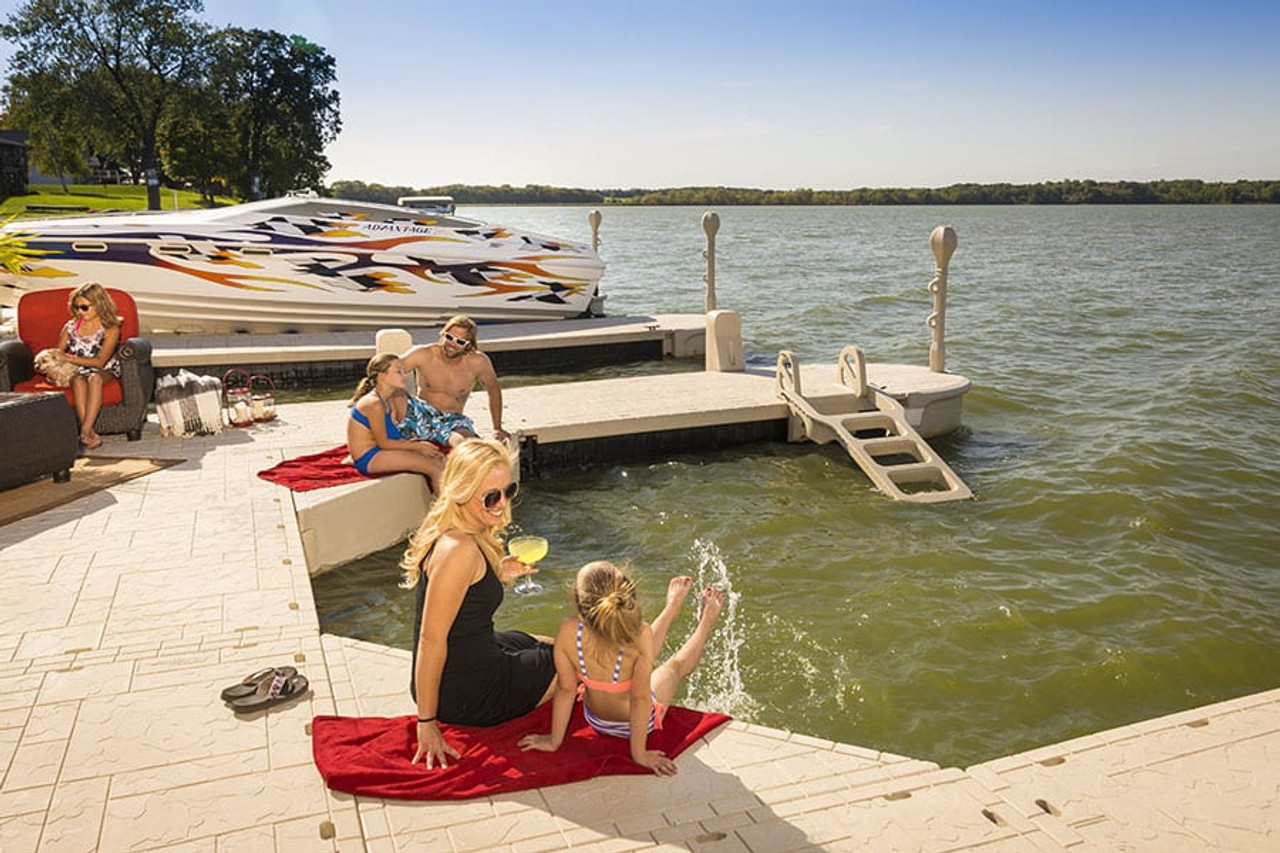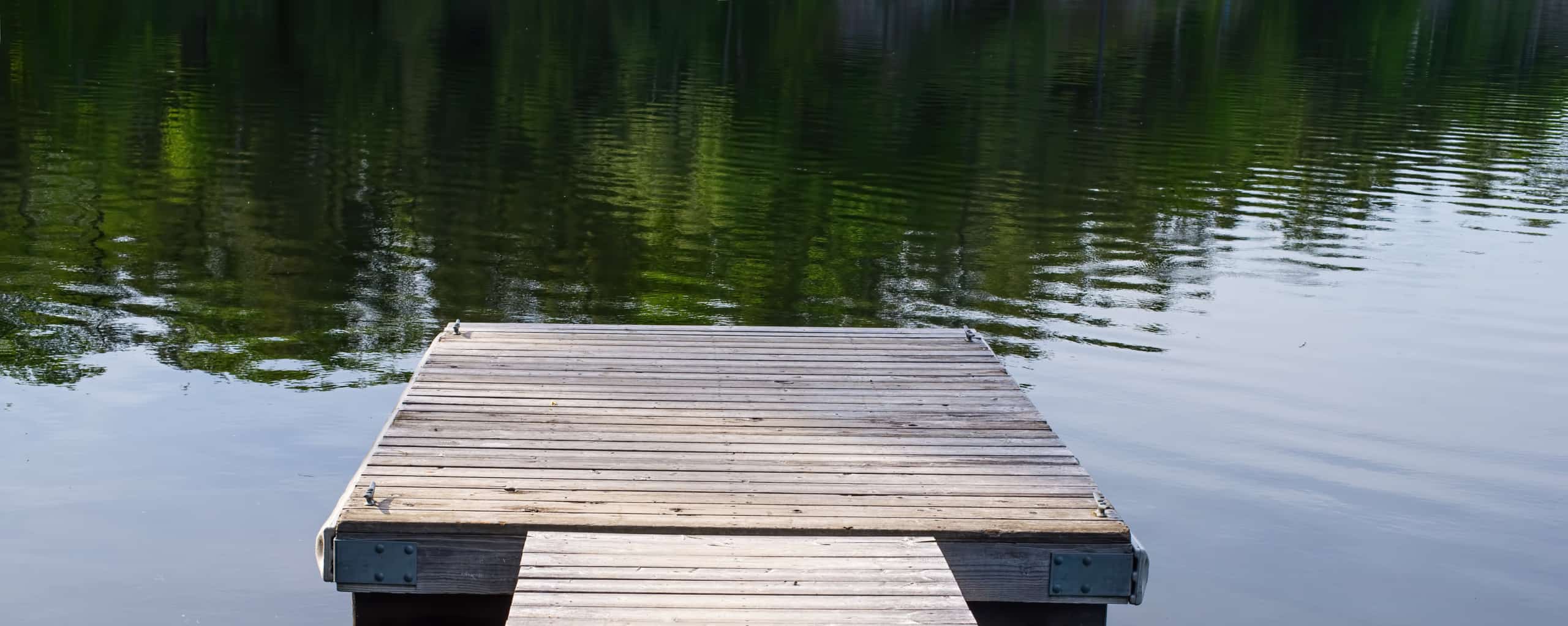Floating Docks: The Smart Selection for Modern Waterside Living and Leisure
Floating Docks: The Smart Selection for Modern Waterside Living and Leisure
Blog Article
Upgrade Your Waterside With Sturdy Floating Docks
Upgrading your waterfront with resilient floating docks can substantially enhance both functionality and aesthetic appeals, providing a flexible remedy for numerous water tasks. These frameworks are developed to adapt to rising and falling water degrees, making sure security and ease of access throughout the seasons. With a series of products available, including low-maintenance alternatives and conventional wood, picking the ideal dock can enhance your personal design and satisfy useful needs. Recognizing the nuances of setup and maintenance is vital for making certain long life and performance. What aspects should you take into consideration when making this financial investment?
Advantages of Floating Docks
Floating docks deal a multitude of benefits that improve their charm for numerous maritime applications. Unlike standard set docks, floating docks increase and fall with the trend, guaranteeing constant access for boats and watercraft no matter of environmental conditions.
In addition, floating docks are less complicated to transfer and set up, providing flexibility for short-term or seasonal use. Their modular design permits for customization to fit certain demands, whether for private marinas, household beachfronts, or industrial applications.
In addition, floating docks create marginal disturbance to the aquatic environment, protecting neighborhood ecosystems and decreasing the possibility of erosion. They also offer boosted security and stability for users, as their buoyant nature supplies an extra flexible surface than inflexible structures.
Moreover, floating docks can facilitate a diverse series of tasks, such as fishing, swimming, and recreational boating, making them a useful possession for waterside advancement. Their convenience and usefulness make floating docks a favored choice for a selection of maritime tasks.
Picking the Right Products
Choosing suitable materials for floating docks is crucial to their longevity, performance, and general effectiveness. When choosing products, think about aspects such as ecological exposure, maintenance requirements, and architectural honesty. Typical materials include timber, plastic, aluminum, and composite choices, each offering unique benefits and downsides.
Wood, while cosmetically pleasing, calls for routine maintenance to stop rot and decay. Pressure-treated timber can boost longevity, however it might still catch water damage over time. Plastic drifts, typically made from high-density polyethylene, are immune to corrosion and require minimal upkeep, making them an eye-catching selection for low-maintenance applications.
Light weight aluminum is one more feasible option, understood for its toughness and light-weight buildings. It is resistant to corrosion and can hold up against severe climate condition, although it may be extra expensive than various other products. Compound materials integrate the very best characteristics of timber and plastic, providing a resistant and low-maintenance choice that simulates the appearance of timber without the associated downsides.
Inevitably, the option of material must straighten with the planned use, environmental factors to consider, and spending plan restraints, ensuring a functional and resilient floating dock that satisfies your certain needs.
Installation Refine Summary
The successful setup of a floating dock relies on careful planning and implementation, guaranteeing that it runs properly in its intended atmosphere. The initial step entails assessing site problems, consisting of water depth, coastline attributes, and dominating weather patterns, which will certainly notify the dock style and anchoring system.
Following the website evaluation, the following phase is to prepare the floating dock parts. This consists of setting up the frame, protecting drifts, and affixing any type of required equipment. It is important to make sure that all links are water-resistant and robust to hold up against aquatic problems.
As soon as the dock is assembled, the installment process starts with placing the dock in the water. This can involve a crane or various other training equipment, specifically for bigger structures. Correct positioning is necessary for capability and safety.

Maintenance Tips for Durability
Normal upkeep is necessary for guaranteeing the long life and ideal efficiency of a floating dock. To accomplish this, begin with routine assessments at the very least twice a year, concentrating on the honesty of the dock's structure, including the flotation tools and linking equipment. Look for indicators of wear, damage, or corrosion, and resolve any issues promptly to avoid additional deterioration.
Cleaning up is one more important facet of upkeep. Eliminate particles, algae, check and barnacles from the dock's surface to avoid slippery problems and maintain aesthetic charm. Utilize a light cleaning agent and a soft brush to prevent damaging the dock's products.
Furthermore, make certain that the dock is properly secured and safeguarded to endure seasonal changes in water degrees and weather. Inspect the anchoring system for security and make adjustments as necessary.
Enhancing Your Outside Aesthetic
To produce a visually attractive exterior space, integrating a floating dock can considerably enhance the total aesthetic of your waterfront residential property. Floating docks are not only useful but can additionally function as a striking prime focus that complements the natural environments - floating docks. Readily available in numerous materials and layouts, these docks can be tailored to match your building's architectural style and landscape
The addition of ornamental aspects, such as incorporated lights or stylish railings, additionally elevates the dock's aesthetic appeal. Think about using all-natural wood coatings, which blend flawlessly with the environment, or selecting contemporary products like light weight aluminum or composite outdoor decking that use a streamlined, contemporary appearance.
Purposefully positioning planters or seating locations on or around the dock can produce welcoming spaces that encourage relaxation and click site satisfaction of waterfront views. In addition, including colors and textures that balance with your landscape will certainly produce a natural aesthetic throughout your outside location.

Final Thought

Updating your beachfront with durable floating docks can significantly boost both performance and aesthetics, offering a flexible service for various water activities. Unlike typical fixed docks, floating docks surge and loss with the tide, guaranteeing consistent access for watercrafts and boat no matter of ecological problems.Choosing suitable products for floating docks is important to their longevity, performance, and overall effectiveness.As soon as the dock is assembled, the setup procedure begins with placing the dock in the water.In summary, floating docks deal various advantages, consisting of flexibility to water level changes and a selection of material alternatives.
Report this page